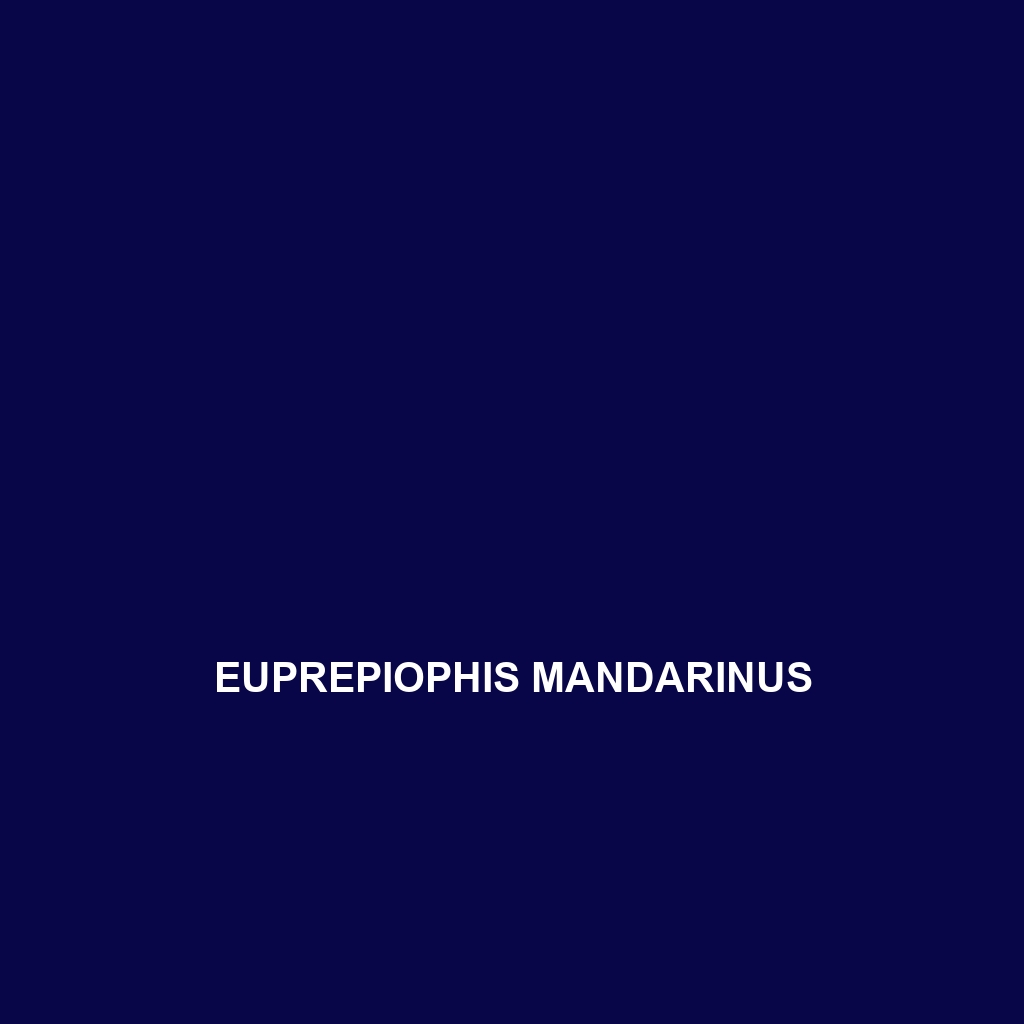Common Name
Euprepiophis mandarinus
Scientific Name
Euprepiophis mandarinus
Habitat
Euprepiophis mandarinus, commonly known as the Mandarin rat snake, is primarily found in regions of East Asia, particularly in southern China, parts of Taiwan, and northeastern India. This species typically inhabits a variety of environments, including humid rainforests and temperate forests. The Mandarin rat snake prefers areas rich in vegetation with adequate cover, such as shrubs and trees, which provides it with shelter and hunting opportunities. These snakes thrive in climates characterized by moderate to warm temperatures and high humidity, allowing them to regulate their body temperature effectively. Additionally, they can also be found in savannas and even adjoining agricultural lands, where they occasionally venture in search of prey.
Physical Characteristics
The Mandarin rat snake is a strikingly beautiful species that can reach lengths of up to 2 meters (approximately 6.5 feet). The body is slender and elongated, featuring a distinctive coloration that varies among individuals. The typical coloration consists of vibrant orange or yellowish tones interspersed with dark blotches or stripes. One of the most distinguishing features of Euprepiophis mandarinus is its large, round eyes, which provide excellent vision, particularly during low-light conditions. Its smooth, glossy scales contribute to its striking appearance and facilitate its swift movements through a variety of terrains.
Behavior
Euprepiophis mandarinus is primarily diurnal, displaying most activity during the day. These snakes are known for their exceptional climbing abilities and can often be seen resting on tree branches or moving through the vegetation. While generally solitary, they may exhibit social interactions during the breeding season, when males often engage in courtship displays. Interestingly, the Mandarin rat snake demonstrates certain nocturnal behavior, becoming more active during the cooler evening hours, particularly in warmer months. Their hunting strategy involves stealth and speed, allowing them to ambush their prey efficiently.
Diet
The diet of Euprepiophis mandarinus is predominantly carnivorous, primarily consisting of small mammals, birds, and amphibians. This species has a particular affinity for rodents, which serve as a critical food source in their native habitats. They are adept hunters, employing constriction techniques to capture and subdue prey. The ability to consume prey larger than their own diameter is a fascinating aspect of their feeding habits. Occasionally, they may also feed on small reptiles and invertebrates, showcasing a degree of dietary flexibility.
Reproduction
The reproductive cycle of Euprepiophis mandarinus typically occurs during the spring months. Mating involves male courtship displays, where they engage in ritualistic behaviors such as body coiling and contact with the female. After a successful courtship, females lay clutches of around 6 to 15 eggs in nests found in tree hollows or leaf litter. The incubation period lasts approximately 60 to 70 days before the hatchlings emerge. The young snakes are fully independent upon hatching, and parental investment is minimal beyond egg laying. Maturation occurs at about 2 to 3 years of age, making them reproductive adults.
Conservation Status
According to the International Union for Conservation of Nature (IUCN), Euprepiophis mandarinus is currently classified as Least Concern, indicating that it does not face immediate threats to its population. However, habitat destruction due to urbanization and agricultural expansion poses potential risks to their future. Conservation efforts are focused on habitat preservation and promoting awareness about this species. Ongoing research is essential to monitor their populations and mitigate any emerging threats.
Interesting Facts
One of the most captivating aspects of Euprepiophis mandarinus is its ability to change its coloration slightly in response to environmental conditions or emotional states. This adaptability not only aids in camouflage but also enhances its chances of avoiding predators. Additionally, the Mandarin rat snake is known for its docile nature, making it a popular choice in the exotic pet trade. Their calm demeanor, combined with their stunning coloration and relatively easy care requirements, contributes to their appeal among herpetology enthusiasts.
Role in Ecosystem
Euprepiophis mandarinus plays a significant role in its ecosystem as a predator, helping to regulate populations of small mammals and birds. This not only contributes to maintaining the balance of the food chain but also aids in seed dispersal, as many of their prey items are herbivores that help in plant propagation. The Mandarin rat snake could be considered a keystone species in its habitat, ensuring the health and stability of the ecosystem by controlling prey populations and participating in natural cycles.
